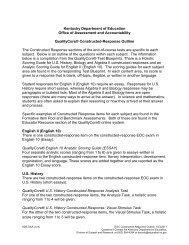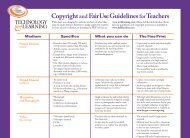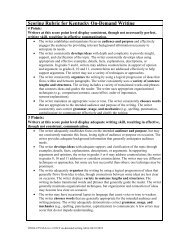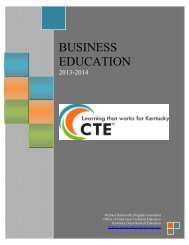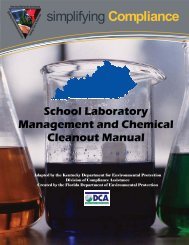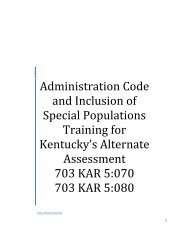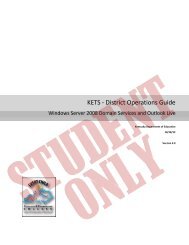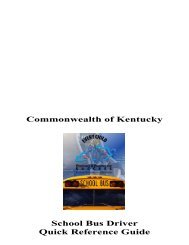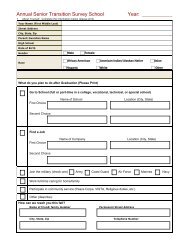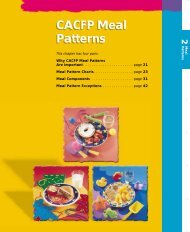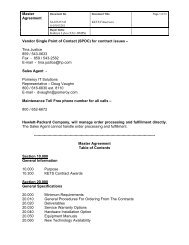Standards with Progressions grades K-HS v. 1.3 - Kentucky ...
Standards with Progressions grades K-HS v. 1.3 - Kentucky ...
Standards with Progressions grades K-HS v. 1.3 - Kentucky ...
- No tags were found...
Create successful ePaper yourself
Turn your PDF publications into a flip-book with our unique Google optimized e-Paper software.
Statistics and Probability (continued)<br />
Grade 6 Grade 7 Grade 8<br />
7.SP.6: Approximate the probability of a chance event by collecting data on the<br />
chance process that produces it and observing its long-run relative<br />
frequency, and predict the approximate relative frequency given the<br />
probability. For example, when rolling a number cube 600 times, predict<br />
that a 3 or 6 would be rolled roughly 200 times, but probably not exactly<br />
200 times.<br />
7.SP.7: Develop a probability model and use it to find probabilities of events.<br />
Compare probabilities from a model to observed frequencies; if the<br />
agreement is not good, explain possible sources of the discrepancy.<br />
a. Develop a uniform probability model by assigning equal probability to<br />
all outcomes, and use the model to determine probabilities of events.<br />
For example, if a student is selected at random from a class, find the<br />
probability that Jane will be selected and the probability that a girl will<br />
be selected.<br />
b. Develop a probability model (which may not be uniform) by observing<br />
frequencies in data generated from a chance process. For example,<br />
find the approximate probability that a spinning penny will land heads<br />
up or that a tossed paper cup will land open-end down. Do the<br />
outcomes for the spinning penny appear to be equally likely based on<br />
the observed frequencies<br />
7.SP.8: Find probabilities of compound events using organized lists, tables, tree<br />
diagrams, and simulation.<br />
a. Understand that, just as <strong>with</strong> simple events, the probability of a<br />
compound event is the fraction of outcomes in the sample space for<br />
which the compound event occurs.<br />
b. Represent sample spaces for compound events using methods such as<br />
organized lists, tables and tree diagrams. For an event described in<br />
everyday language (e.g., “rolling double sixes”), identify the outcomes<br />
in the sample space which compose the event.<br />
c. Design and use a simulation to generate frequencies for compound<br />
events. For example, use random digits as a simulation tool to<br />
approximate the answer to the question: If 40% of donors have type A<br />
blood, what is the probability that it will take at least 4 donors to find<br />
one <strong>with</strong> type A blood<br />
<strong>Kentucky</strong> Department of Education<br />
41 | P a g e




